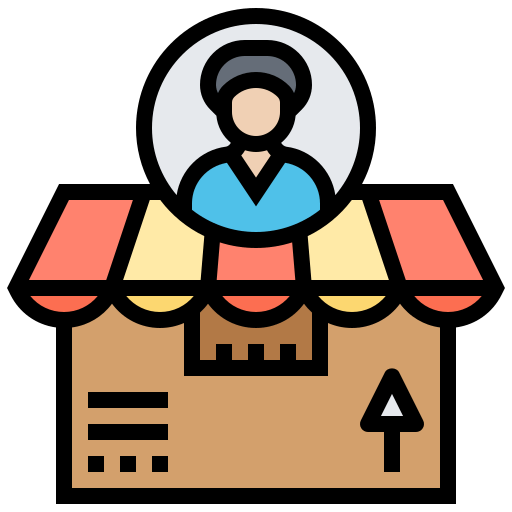Dropshipping business model allows you to sell products to your customers without worrying about inventory management, storage, and shipping. A third-party dropshipping supplier will usually ship the product directly to your customer after you receive an order, and they’re responsible for any returns or refunds.
Dropshipping is an incredibly profitable business model because:
- It’s easy to set up and run at any scale
- It requires little to no upfront investment
- It’s a low-risk business model
But, dropshippers around the web report that only 10-20% of dropshipping businesses are successful. To succeed, you need a proper understanding of how to start a dropshipping business, a passion for eCommerce, and consistency.
Today, we’ll look at how to properly set up a dropshipping business and ensure it runs smoothly from the start. Here’s a step-by-step process to successfully set up a dropshipping business structure.
How to Properly Set up a Dropshipping Business a Step-by-Step Guide
Step 1: Researching and Choosing your Niche
Step 2: Finding and Evaluating Suppliers
Step 3: Setting up an Online Store
Step 4: Marketing and Driving Traffic to Your Store
Step 5: Operations and Order Fulfillment
Step 6: Scaling up and Growing Your Business
Get Started With Dropshipping Today
Step 1: Researching and Choosing your Niche
Choosing the right niche market for your business is essential in starting a dropshipping business. It determines your business’s success by allowing you to build an online store that sells what your customers want. You want to find a dropshipping niche that fits your interests and expertise.
Start by identifying potential niches and looking at relevant sites to get some dropshipping business ideas. If someone is already successful in selling something, there’s a good reason for it—and their site might tell you what’s currently hot in the niche. You can also use SEMrush to uncover all of their hottest keywords they’d like to keep hidden from you.
After identifying the niche, find more information about demand and competition within the niche. Demand determines the number of people interested in buying your product or service. Use search query data on Google, reviews on similar products, and sales data to estimate the demand for your targeted product.
Amazon’s bestseller lists can also show you the products attracting interest which you can sell to create a successful dropshipping store. If you’re looking for something specific, like drones or makeup accessories, try searching for those terms on keyword tools, such as Ahrefs or Google Trends.
Here’s an example of a dropshipping business named Fruity Bullet in the Home food processing equipment niche. They sell portable food blenders.
Your competition is the number of sellers or online stores selling similar dropshipping products on Amazon, Shopify, and other eCommerce platforms. A low-competition niche will be easier to enter than one with high competition.
Check competition by looking at their listings (the niche dropshipping products) and seeing how they perform on Amazon’s bestseller list. A competitor spy tool like Similarweb or Alexa can also help you check your competition. The key metrics to consider would be:
- Sales volume
- Ratings and reviews
- Reviews per sale
- Average order value
The right niche should make business sense to you and appeal to a target audience. To get that dropshipping business idea that sells hundreds of products, research on a niche with high sales volume and relatively low competition.
Step 2: Finding and Evaluating Suppliers
You can use different ways to find your dropshipping suppliers. You can:
- Search on eCommerce sites, such as Alibaba and eWorldTrade
- Look at search engines like Google
- Ask your network for referrals
- Reach out to other dropshippers
You’ll want to find out more about each potential supplier or wholesale dropshipping accounts before you start dropshipping with them. This will help you determine whether or not they’re a good fit for your online business.
Here’s a supplier from AliExpress selling cat accessories. Their five-star reviews and 35 orders shows their reliability and good product quality.
When looking for dropshipping suppliers, remember that supplier reliability and product quality are essential in determining if the supplier will work well with your business. Here are some questions to ask yourself when evaluating a dropshipping supplier:
- Does the supplier have experience in dropshipping?
- How long does it take for them to process orders?
- Are their prices competitive? What are their shipping costs?
- Do they have good customer service? How quickly do they respond to communication?
Check online reviews from previous customers before deciding on reliable suppliers. Look for any potential red flags that might indicate problems with their customer service or quality control measures, such as late shipments.
After choosing a supplier, build a long-lasting relationship to ensure you have a reliable source of quality products and efficient shipping.
Step 3: Setting up an Online Store
After picking your supplier, it’s time to set up your own online store. This is where you’ll get into the nitty-gritty of design, branding, and integration.
Start by choosing the right eCommerce platform for your dropshipping business store. There are many options out there, including but not limited to the following:
- BigCommerce
- WooCommerce
- Shopify
- Sellfy
- Squarespace
- Amazon
- Alibaba
- Adobe Commerce (Magento)
Once you’ve chosen your eCommerce platform, set up your eCommerce store design and branding. This might include choosing colors for the background and logo design, selecting fonts that are easy to read, picking a good theme, etc.
Go for a professional and user-friendly eCommerce store design, so customers can easily navigate it and find what they’re looking for.
Finally, integrate the chosen platform with your supplier and social media channels before listing and selling products. This will allow you to effectively manage your dropshipping business and create a seamless customer experience.
Step 4: Marketing and Driving Traffic to Your Store
With your store being all-ready, you need to get customers in there. Marketing is crucial for dropshipping eCommerce businesses to drive traffic to stores and increase sales. You can use a marketing strategy such as:
- SEO (Search engine optimization)
- Social media advertising eg, Facebook Ads/ TikTok Ads that target the right audience.
- Influencer marketing
- Retargeting techniques such as email marketing.
Social media marketing helps you grow your brand/ shop awareness by helping you spread a word about what you’re selling. Here’s an example of how a dropshipping store selling home food processing equipment is using TikTok for marketing.
Whatever strategy you choose, upselling and cross-selling can help you make the most from each dropshipping transaction. With upselling, you encourage impulse buys and boost your revenues. Find a way always to recommend additional products to your customers.
You can also use statistics to settle on a marketing strategy that is relevant to your niche. For example, 53.3% of all web traffic is driven by organic search.
Step 5: Operations and Order Fulfillment
Order fulfillment involves managing inventory, packing, and shipping, communicating with customers, and providing excellent customer service.
The success of your dropshipping business depends on your ability to fulfill orders quickly and efficiently. In addition to having the right logistics in place, ensure you can communicate effectively with your customers and provide them with excellent customer service.
Since your dropshipping business is integrated with your suppliers, your order fulfillment is a bit easy. But, despite not handling or stocking the products, you still have a part in managing the inventory. For example, you should keep track of returns and refunds and other items that are selling well and ones that aren’t.
You should also confirm that there are enough products on hand at any given time so customers don’t have long wait times between ordering and shipping products.
Step 6: Scaling up and Growing Your Business
Once you’ve successfully set up your dropshipping business, you’re ready to scale it. This means identifying growth opportunities by looking for what’s working and what isn’t. For instance, if a certain product sells more than others, try to find more of those products.
You’ll also want to optimize operations, so your processes run as smoothly as possible. This will help you minimize waste and increase profitability. A good example of this would be automating processes like customer service or automating content publishing, so you don’t have to handle many things manually.
Again, you need to manage your business cash flow. Set up a good accounting system to track your expenses and revenues. The more you know about how much money is coming in and going out, the easier it will be to manage your personal and business finances effectively.
If scaling up sounds like a lot of work, you can hire freelancers or outsource tasks like social media management so you can focus on improving and growing your business.
Get Started With Dropshipping Today
Dropshipping requires less initial capital, it is easy to manage and scale, and you can get a wide selection of products to sell.
And, suppliers make 18.33% more profit when they sell through dropshippers. It’s a win-win situation for you and the shop owners; therefore, they’ll be willing to help your dropshipping business succeed.
Statista projects that the global dropshipping market will reach $476.1 billion by 2026, up from the 2022 estimate of $ 196.78 billion. This means there’s room to set up your dropshipping business and become profitable.
The secret of your success lies in getting the right niche and running a successful marketing campaign. As you begin, continually evaluate and improve your business to offer competitive services.








